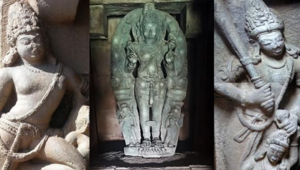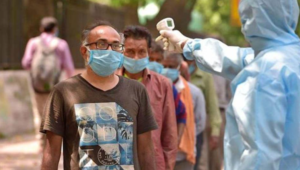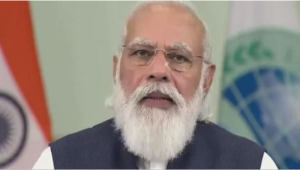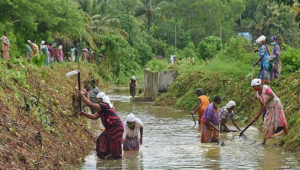
Monetisation by merger of RTC depots on anvil?
Identification of depots to rely on proximity to arterial roads, dependence on rent buses

The beleaguered Telangana State Highway Transport Company (TSRTC), which is grappling with crushing losses, has launched deliberations to determine the methods to extend its income.
These embody steps to monetise its belongings within the type of land parcels it owns throughout the State. On the anvil is a merger of bus depots.
Sources requesting anonymity mentioned the main elements within the identification of such depots is their proximity to arterial thoroughfares, and the dependence on their rent buses. The bigger the variety of rent buses at such depots shut to one another, the upper are the possibilities of monetising it.
Match for experiment.
Karimnagar 1 and Karimnagar 2 depots are a match case for this experiment, they mentioned. “Each depots are in prime areas and have a lot of rent buses. They buses are parked elsewhere, not on the depot. Staff are assigned to those buses and as soon as their responsibility is completed, these buses depart the depot. As soon as merged, the owned buses might be moved to 1 depot, releasing up the opposite for use for monetisation,” a supply defined, at the same time as he clarified that the merger of depots wouldn’t have an effect on employees.
“They are going to be moved from one depot to the opposite. The thought is that after the merger occurs, income from the vacant bus depot might be generated via coming into into build-operate-transfer agreements with good entities. For the time being, no formal proposal has been submitted,” he added.
With rent buses being one of many elements that might resolve merging of depots, official information reveals that as on June this 12 months, TSRTC throughout the State employed as many as 57 Metropolis Metro Specific buses, 328 Metropolis Odd or Mofussil companies buses, 1,710 Pallevelugu buses and 992 Specific buses.
Discussions on producing income from the land parcel on which TSRTC’s Bus Physique-building unit (BBU) stands had been additionally held. These entailed exploring prospects of shifting the BBU to the workshop in Uppal. Nevertheless, sources mentioned concrete steps are but to be taken.
Commerce union leaders opined that the TSRTC’s land financial institution contains vacant land parcels, sprawling bus stations, depots, and workshops, amongst others.
TSRTC Joint Motion Committee office-bearer Ok. Raji Reddy estimated the entire land financial institution to be round 1,400 acres.
It has been a longstanding demand of the joint motion committee that the TSRTC stay clear concerning such offers.
“All TSRTC lands are vital, prime lands. We’ve got all the time been towards benami transactions. There ought to be an open tendering course of. Additionally, such plans shouldn’t result in the discount of TSRTC employees,” Mr Reddy mentioned.
‘Consider employees welfare’
One other commerce union chief identified that any monetisation plan that the TSRTC administration intends to make, will need to have the company and its staff’ welfare in thoughts.
“The land beside Bus Bhavan is round 10 acres. Then there are Musheerabad 1, 2, 3 depots and a brand new automobile parking yard. These mixed run into 35 acres. Anywhere that has a depot and a bus station means it’s a huge city. With that, income might be generated from nearly all over the place. To be able to not have a syndicate in bidding, open tenders have to be referred to as,” he mentioned.
Indian lab may have helped validate research that fetched the medicine Nobel.
The Indian Institute of Chemical Biology (IICB) under the CSIR had shown in 2018 that the cells of the immune system may also be critically dependent on these channels to sense physical cues.

While Ardem Patapoutian, along with David Julius, on Monday bagged the Nobel Prize in medicine for their seminal work in the discovery of receptors that allow humans to feel temperature and touch, a government lab in India, too, may have helped establish the significance of their discovery.
The Indian Institute of Chemical Biology (IICB) under the CSIR had shown in 2018 that the cells of the immune system may also be critically dependent on these channels to sense physical cues they encounter inside the body.
Patapoutian’s discovery of the Piezo channels — a basic fact of biology that was not known before 2010 — in the nervous system was followed up by a number of labs to find the role of these channels in other different bodily functions and how exactly they work.
For instance, David Beeche’s lab in University of Leeds discovered in 2014 that the pressure sensing function of the channels also makes them critical in the cardiovascular system, such as to sense changes in blood pressure.
Besides, Wolfgang Liedtke’s group in Duke University showed in 2014 that these channels play a major role in sensing pressure in the cartilage of our joints.
Back home, a group of IICB scientists led by immunologist Dipyaman Ganguly first showed in 2018 that the cells of the immune system may be critically dependent on these channels for sensing physical cues inside the body.
Their paper titled “Cutting Edge: Piezo1 Mechanosensors Optimize Human T Cell Activation”, published in The Journal of Immunology, provided the first evidence for the involvement of Piezo mechanosensors in immune regulation.
Another group in China uncovered the structural basis of the channel’s working in 2018. All these works confirmed the diverse physiological role and importance of Piezo channels.
“This is their moment and they deserve all the accolades,” said Ganguly, adding that his lab may be the only one in this field in India as of now.
“We are happy to have contributed in a way that may have helped establish the significance of Patapoutian’s work.”
35 more air squadrons in the next decade.
The integration of fifth and sixth generation technologies into 114 aircraft manufactured in India for the Indian Air Force will be a key consideration while selecting vendors for the mega deal, India’s new air force chief Vivek Ram Chaudhari said on Tuesday.
Addressing the annual press conference ahead of Indian Air Force’s raising day on 8 October, Chaudhari also said despite plans to procure 114 multi-role fighter aircraft (MRCA) and placing orders for 83 indigenously built light combat aircraft (LCA) besides some other procurements, the IAF would still be short of the sanctioned strength of 42 fighter squadrons required for a two front war with Pakistan and China. The realistic number of squadrons India could have would be around 35 till the next decade, he told reporters.
First 5G network to be launched within two-quarters of spectrum auction, pan-India coverage in 1 year: Airtel
5G launch possible within two quarters of spectrum auction: Airtel CTO
“Within two quarters after the auction, 5G networks can go live. After 1 year, we can see a large portion of the country getting covered by 5G,” Sekhon said.
Bharti Airtel said that first 5G network will be launched within two quarters of spectrum auction and can cover a large part of the country after one year. The Sunil Mittal-led telecom operator also conducted India’s first rural 5G trial with Swedish telecoms equipment maker Ericsson at the outskirts of Delhi/NCR.
Airtel’s chief technology officer Randeep Sekhon said that 5G auctions could take place early next year.
“Within two quarters after the auction, 5G networks can go live. After 1 year, we can see a large portion of the country getting covered by 5G,” Sekhon said.
Masterclass on 5G Technology
Learn technical architecture and industry applications of 5G technology with business case models especially in terms of Smart Cities, Digital Economy, High-Speed Digital Services, Robotics, Precision Medicine, Autonomous Cars
On 5Gi or local 5G standard, Sekhon said that Airtel is yet to see a lab where the technology can be tested. “We are keenly watching the standard and its impact on handset and radio. However, we are currently looking at technology which is commercially already available.”
Sekhon said that 5G technology by 3GPP is already matured globally and the telco is conducting trials to test 5G use cases for consumers and industries.
Over 91% agricultural households in TS burdened by loans
In the percentage distribution of amount of outstanding loans by sources, Telangana topped in the country with 41.3 per cent in the category of professional money lenders.
Around 91.7 per cent of agricultural households in the State are burdened by loans with each household having an average debt of Rs 1,52,113. According to ‘Situation Assessment of Agricultural Households and Land and Livestock Holdings of Households in Rural India, 2019’, a survey conducted by the Ministry of Statistics and Programme Implementation, a majority of the outstanding debt is taken from relatives and friends, and not from financial institutions.
In the percentage distribution of amount of outstanding loans by sources, Telangana topped in the country with 41.3 % in the category of professional money lenders. The outstanding debts of Telangana farmers in all scheduled commercial banks are 24.8 per cent, in regional rural banks 8.2%, cooperative societies 0.5 %, cooperative banks 3.2 %, SHGs 4.6 %, other institutional agencies 1.2 %, agricultural money lenders 9.1 %, professional money lenders 41.3 %, relatives and friends 1.4 % and from other non-institutional agencies 5.8 %
If a loan was received from one of the relatives or friends free of interest, it was considered as a loan taken from ‘relatives and friends’. If the loan had interest, it was considered as taken from an ‘agricultural moneylender’, professional moneylender, ‘input supplier’, depending upon the type of business carried out by the relative or friend.
When contacted, Telangana State Commission for Debt Relief Chairman Nagurla Venkateshwarlu said that the borrowings by farmers were the highest from private money lenders in the State as commercial banks were not coming forward to give crop loans. As per the guidelines of Reserve Bank of India, the commercial banks have to give up to Rs 4 lakh crop loan to farmers without insisting on collateral security. But the banks were not implementing the same, he pointed out.
Venkateshwarlu, who has already written a letter to Union Finance Minister Nirmala Sitharaman, seeking directions to the bankers to implement the RBI guidelines, said that he would soon convene a meeting with State level bankers and request them to extend crop loans liberally to farmers.












